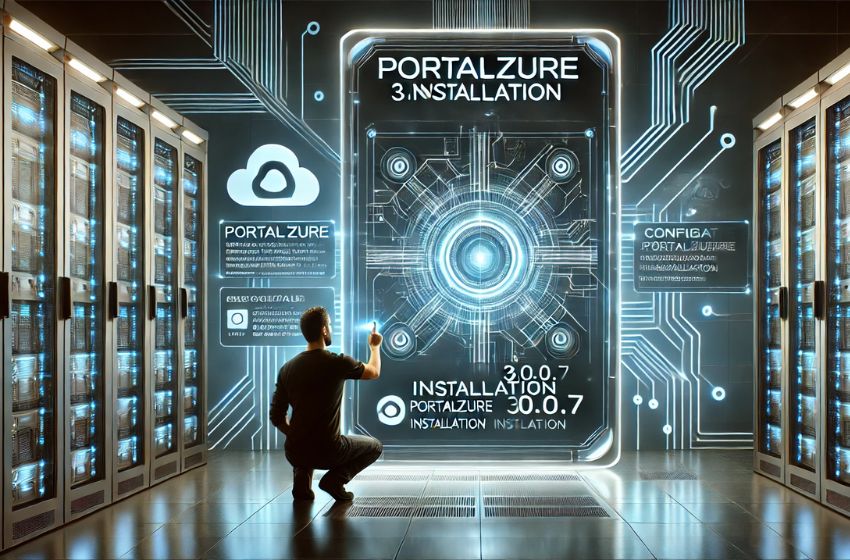In the fast-evolving digital world, enterprises require robust and efficient portal solutions to streamline operations and enhance user experiences. One such powerful portal software is PortalZure. With the latest version, PortalZure3.0.0.7, businesses can optimize their web-based interactions, improve security, and ensure seamless integrations with cloud services.
This article will walk you through the step-by-step process of how to install PortalZure3.0.0.7, its system requirements, key features, and post-installation configuration. If you are looking for a hassle-free installation guide, you’ve landed in the right place.
What is PortalZure3.0.0.7?
PortalZure is an advanced web portal solution designed for enterprises looking to enhance digital interaction and optimize workflows. The PortalZure3.0.0.7 version brings notable improvements in security, performance, and customization capabilities. It integrates seamlessly with cloud platforms such as Microsoft Azure and AWS, making it a preferred choice for businesses that rely on cloud-based infrastructure.
Key Features of PortalZure3.0.0.7
- Cloud Integration: Allows businesses to connect with Azure, AWS, and other cloud solutions.
- Enhanced Security: Provides multi-factor authentication and robust encryption techniques.
- User-Friendly Interface: Offers a customizable UI for better user engagement.
- Scalability: Supports multiple users and large-scale enterprise environments.
- Seamless API Integration: Enables connectivity with third-party applications.
System Requirements for PortalZure3.0.0.7 Installation
Before installing PortalZure3.0.0.7, ensure your system meets the following minimum requirements:
Hardware Requirements
- Processor: Intel Xeon or equivalent (Quad-core minimum)
- RAM: Minimum 8GB (16GB recommended for enterprise use)
- Storage: At least 100GB of free disk space
- Network: Stable internet connection (minimum 10 Mbps)
Software Requirements
- Operating System: Windows Server 2016/2019/2022 or Linux (Ubuntu 20.04, CentOS 8)
- Database: Microsoft SQL Server 2019 or MySQL 8.0
- Web Server: IIS 10 or Apache 2.4
- Cloud Access: Azure Active Directory (if deploying in Azure)
Step-by-Step Guide How to Install PortalZure3.0.0.7
Step 1: Download the Installation Package
Visit the official PortalZure3.0.0.7 website or authorized distributor to download the installation package. Ensure that you download the correct version compatible with your operating system.
Step 2: Prepare Your Server Environment
- Update your OS and install necessary updates.
- Configure a static IP address.
- Install the required dependencies such as .NET Framework, IIS (Windows), or Apache (Linux).
Step 3: Install Database
- Install Microsoft SQL Server or MySQL.
- Create a new database named PortalZureDB.
- Set up a database user with full permissions.
Step 4: Install PortalZure3.0.0.7
For Windows Installation:
- Extract the downloaded installation files.
- Run the setup.exe as Administrator.
- Follow the on-screen installation wizard.
- Provide database credentials and server configurations.
- Select the installation directory and proceed.
For Linux Installation:
- Extract the installation package.
- Open Terminal and navigate to the extracted folder.
- Run the command:
sudo ./install_portalzure.sh - Enter database credentials when prompted.
- Wait for the installation process to complete.
Step 5: Configure the Web Portal
- Navigate to your domain or IP address.
- Log in with the default admin credentials.
- Update security settings and create new user accounts.
Step 6: Verify Installation
- Check for any missing dependencies in the system logs.
- Perform a test login to ensure the portal is accessible.
- Ensure all APIs and integrations are functioning correctly.
Post-Installation Setup
1. Customizing the Portal UI
After installing PortalZure3.0.0.7, customize the UI by:
- Updating the company branding.
- Configuring dashboards for various user roles.
2. Enhancing Security
- Enable multi-factor authentication (MFA).
- Configure SSL certificates for HTTPS encryption.
- Set up role-based access control (RBAC).
3. Performance Optimization
- Regularly update the software to apply patches.
- Optimize database queries for better performance.
- Utilize cloud CDN services for faster load times.
4. Backup & Disaster Recovery
- Schedule automatic database backups.
- Store backup files on a secure cloud storage.
- Create a rollback plan in case of unexpected failures.
Troubleshooting Common Installation Issues
1. Installation Fails Due to Missing Dependencies:
- Ensure all required frameworks and database services are installed before starting the installation.
2. Database Connection Issues:
- Verify database credentials.
- Ensure the database service is running and accessible.
3. Portal Not Loading Properly:
- Check server logs for error messages.
- Restart the web server and database services.
- Clear browser cache and retry.
Conclusion
Installing PortalZure3.0.0.7 is a straightforward process if you follow the correct steps and ensure system compatibility. Whether deploying it on Windows or Linux, having the right configurations in place will help you get the most out of this powerful portal solution.
For more such tech-related guides and updates, visit Empire Magazines, where we bring the latest and most detailed installation procedures, software reviews, and tech news to keep you ahead in the digital world.

